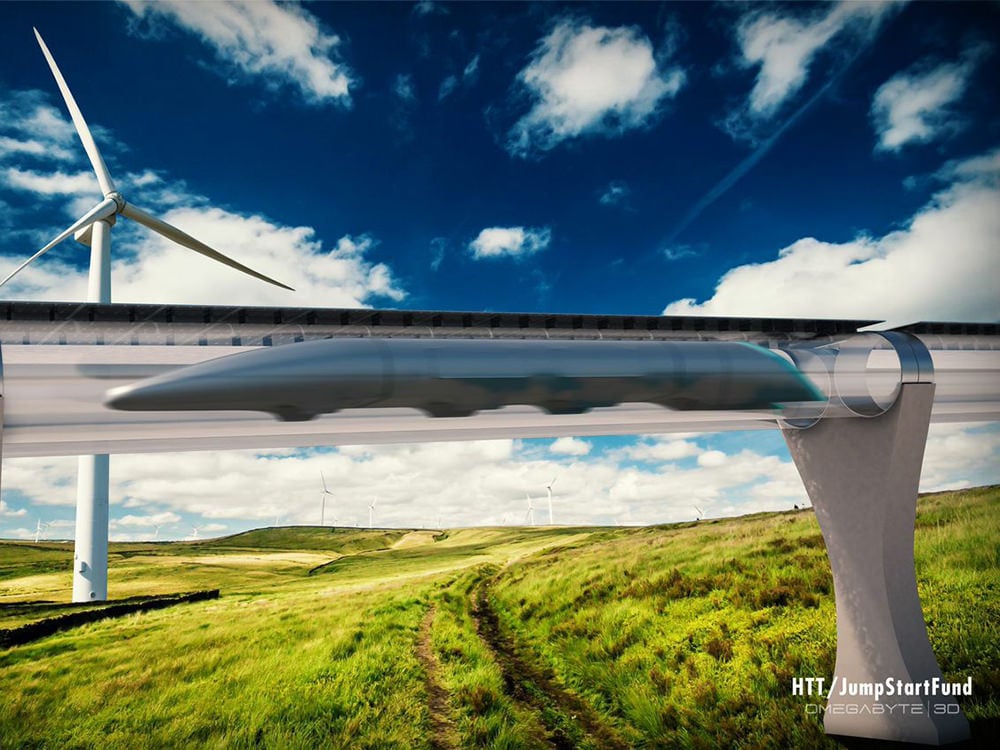Back in 2012, Elon Musk proposed a revolutionary idea that he described as the "
fifth form of transportation
". Known as the Hyperloop, his proposal called for the creation of a high-speed mass transit system where aluminum pod cars traveled through a low-pressure steel tube. This system, he claimed, would be able to whisk passengers from San Francisco to Los Angeles in just 35 minutes.
At the time, Musk claimed he was too busy to build such a system, but that others were free to take a crack at it. Nevertheless, the SpaceX founder has remained involved in the Hyperloop's development by hosting the
Hyperloop Pod Design Competition
, an incentive competition involving student and engineering teams. The second of these competitions was recently held and featured some impressive pods achieving impressive speeds.
The Pod Design Competition was first announced in June of 2015, and was quickly joined by over 700 teams. By January of 2017, 100 teams were selected to take part in the
first competition
, which was held from January
27th to 29th at theSpaceX's Hyperloop Test Track (located in Hawthorne, California).
Also known as the Hypertube, this track consists of a partial-vacuum steel tube that measures 1.6 km (1 mi) long and
1.83 meters in diameter.
[caption id="attachment_127361" align="aligncenter" width="580"]
Team MIT's Hyperloop pod car design. Credit: MIT/Twitter[/caption]
The winning design, which was provided by a team from MIT, consisted of a car that would rely on electrodynamic suspension to achieve a cruising speed of 110 m/s (396 km/h; 246 mph). Based on the positive response and submissions from the first competition, SpaceX decided to hold the
Hyperloop Pod Competition II
, which took place this past weekend (August 25th to 27th, 2017) at their
Hypertube
test track.
Whereas the first competition involved a series of tests designed to accelerate the development of prototypes, the second had only one criterion: maximum speed. The competition was open to both new and returning teams, the latter of which had already tested their pods in the first competition. Twenty-five teams registered in the competition, representing universities and technical institutions from all over the world.
But in the end, only three teams made the cut and competed on Sunday, August 27th, having met the pre-run criteria. The winning entry came from WARR Hyperloop, a team made up of student from the Technical University of Munich. During the test run, their pod achieved a top speed of 324 km/h ( 201 mph), which was far in excess of the second place team.
It was even more impressive than WARR's previous test run during the first competition - where their pod achieved a maximum speed of about 93 km (58 mph). The WARR pod was also the only one that attempted to reach its maximum speed during the competition. Their success was due in part to the pod's design, which is fabricated from carbon fiber to ensure that it is lightweight and durable.
https://www.instagram.com/p/BYU1EttgwJE/?taken-by=elonmusk
Musk praised the teams effort during the competition and took to Twitter to post the results of the latest pod tests. As he
tweeted
at 17:32, shortly after the test run, "Congratulations to WARR team from Tech Univ Munich for winning 2nd
@ Hyperloop
competition! Peak speed of 324 km/h, which is over 200 mph!!"
Some additional comments followed later that day and on the following morning (Monday, August 28th):
"Btw, high accel only needed because tube is short. For passenger transport, this can be spread over 20+ miles, so no spilt drinks."
Musk posted the video of the WARR pod's performance on Twitter and to his
account (see below). He also announced that SpaceX and his latest startup -
The Boring Company
- will be hosting a third pod design competition next year. The stakes, he claimed, would be even higher for this competition, with pods expected to reach speeds of over 500 km/h (310 mi) on the test track.
While this is still far from the speeds that Musk originally envisioned in his
white paper
- up to 1280 km/h (800 mph) - it does represent a significant progression. And with
six startups
now looking to make the Hyperloop a reality – including
Hyperloop Transportation Technologies
(HTT) and
Hyperloop One
– the only question is, how long before the "fifth mode of transportation" becomes a reality?
Be sure to check out this video of the test track during the first Pod Design Competition, courtesy of SpaceX:
Further Reading: TechCrunch, SpaceX, Instagram
 Universe Today
Universe Today
